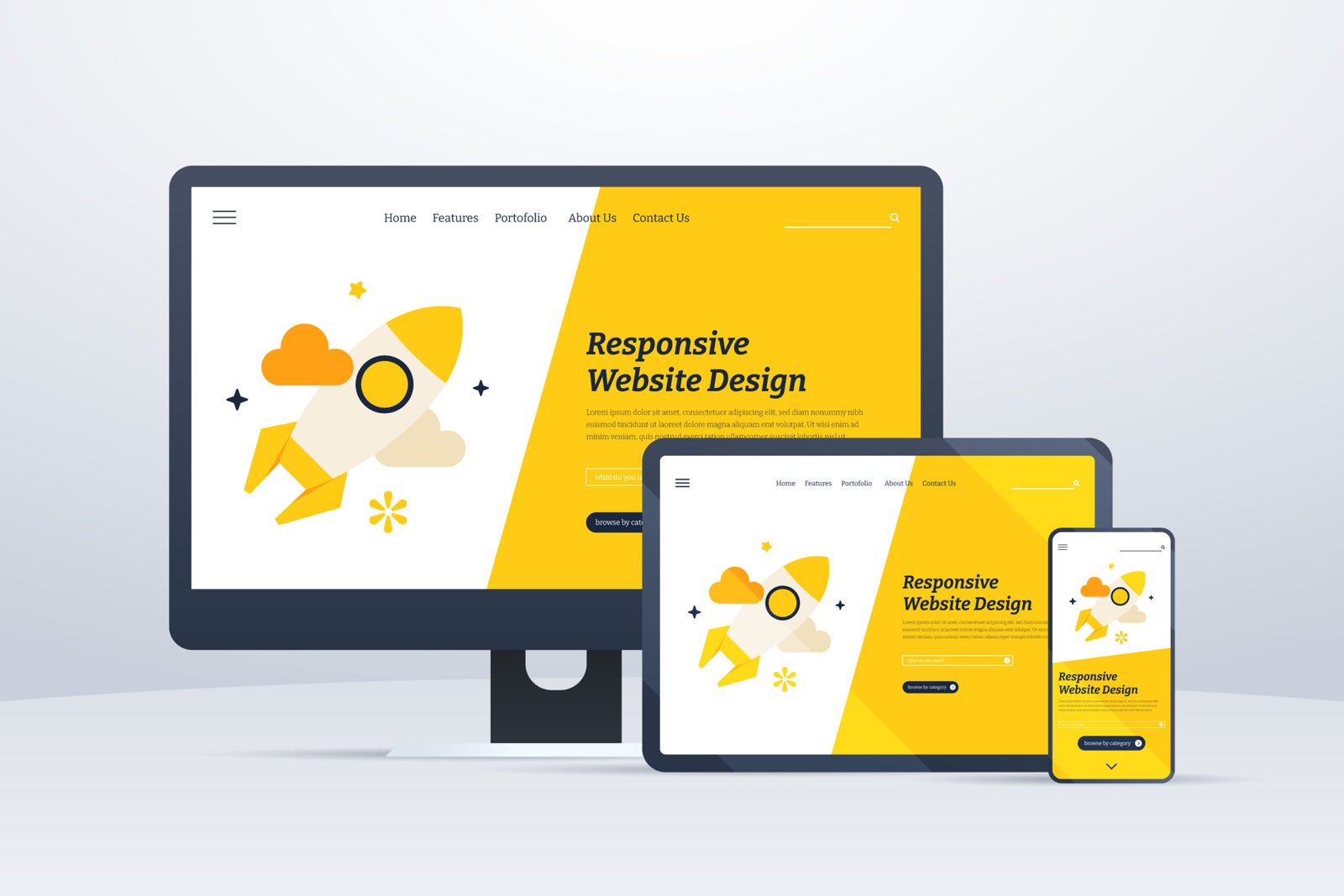In today’s dynamic digital realm, it is absolutely crucial to prioritize the creation of a flawless and captivating user experience while planning for a website design and development. With the increasing variety of devices through which individuals access websites, it has become more important than ever to guarantee a seamless and engaging encounter for users. Responsive web design is a crucial aspect that should not be overlooked. A responsive website is designed to seamlessly adjust its layout and content to cater to different screen sizes, ensuring optimal user experience and aesthetic appeal across multiple devices such as desktop computers, tablets, and smartphones.
Let’s delve into the concept of responsive website design and its importance in today’s digital landscape.
Understanding Responsive Web Design
Responsive web design is an innovative approach that focuses on the creation of websites that possess the ability to adapt and modify their layout and content in a seamless manner, depending on the screen size of the device being utilized. When it comes to viewing a website, whether on a spacious desktop monitor or a compact smartphone screen, having a responsive design is crucial. This design ensures that all the website’s components, including images, text, and navigation menus, are meticulously optimized to provide users with a seamless and gratifying browsing experience.
Key Principles of Responsive Web Design:
Fluid Grids:
A fluid grid is a responsive web design technique where webpage elements adjust proportionally to the screen size. By implementing this technique, you can ensure that your content is optimized for screens of all sizes, preventing any issues such as cramped or stretched appearance.
Flexible Images:
When it comes to creating a visually captivating website, the significance of images cannot be overstated. Images play a pivotal role in capturing the attention of visitors and leaving a lasting impression. Responsive design is a cutting-edge approach that ensures images are skillfully scaled to perfectly fit the screen, all the while preserving their original aspect ratio.
Media Queries:
Media queries are an essential component of CSS techniques that enable websites to effortlessly implement diverse styles depending on unique characteristics such as screen width, resolution, and orientation. By leveraging media queries, websites can optimize their visual presentation and ensure an enhanced user experience across various devices.
Breakpoints:
Breakpoints are specific screen widths, that play a crucial role in optimizing website layouts to adapt seamlessly to the varying sizes of different devices. Designers meticulously establish breakpoints in order to guarantee a flawless and uninterrupted transition across diverse screen dimensions.
Advantages of Responsive Web Design
Enhanced User Experience:
A responsive web design ensures an optimized and seamless user experience on various devices. Accessing content should be effortless for users, without the need to zoom in, scroll excessively, or navigate through awkward interfaces.
Cost-Efficiency:
By opting for the development of a single responsive web design, can effectively avoid the hassle of creating multiple versions tailored to different devices. This not only saves valuable time but also optimizes resource allocation, resulting in a more efficient and cost-effective approach.
SEO Benefits:
Search engines prefer responsive websites, as they offer a consistent URL and content structure. By embracing responsiveness, website owners can ensure that their online presence remains optimized for search engines, ultimately driving more organic traffic to their site.
Future-Proofing:
With the advent of new devices with diverse screen sizes, it is imperative to have a responsive design for your website. In this way, you can guarantee seamless compatibility of your website across all platforms. Thus, eliminating the need for constant redesign efforts.
Higher Conversion Rates:
Enhancing user experience and optimizing website accessibility are crucial factors that can significantly impact user engagement and conversion rates. By ensuring seamless interaction and effortless access to your website, users are more inclined to its content and ultimately fulfill desired actions.
In conclusion, Responsive website design has undergone a remarkable transformation, transitioning from a mere trend to an absolute necessity in today’s ever-changing digital landscape. By incorporating responsive design principles into web development strategy, businesses and individuals can craft visually appealing and user-friendly websites that effectively captivate and retain the attention of their target audience. This approach guarantees that their online presence remains highly impactful and equally accessible across a wide range of devices, including desktop computers, laptops, tablets, and smartphones.



